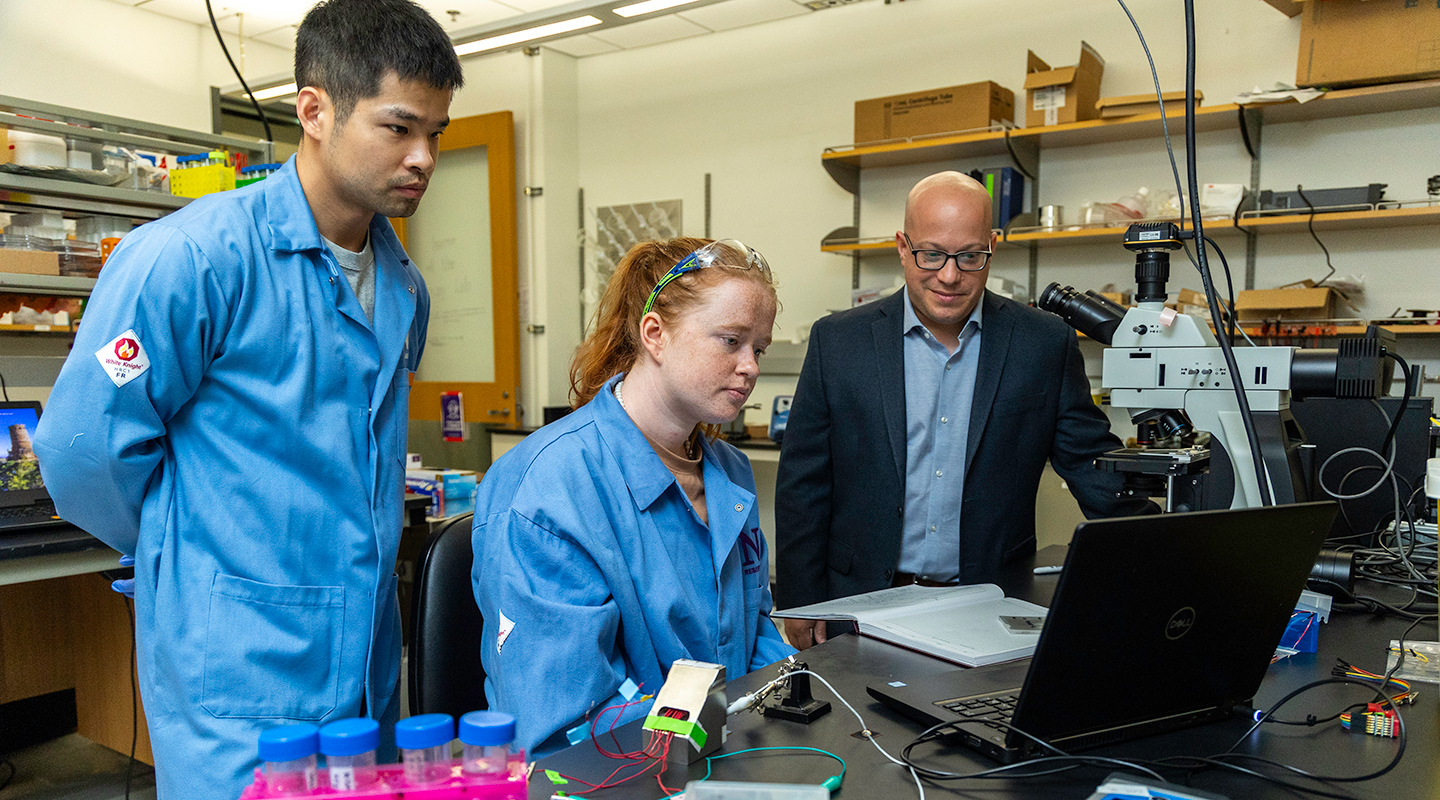When Bioelectronics and Synthetic Biology Unite
Jonathan Rivnay’s bioelectronics work blurs the line between biology and electronics

The first time Northwestern Engineering’s Jonathan Rivnay appeared as co-author on a published paper – a 2006 piece in the Journal of Applied Physics – bioengineering was not on his mind.
That paper, completed during Rivnay’s time as an undergraduate studying materials science and engineering, revealed the possibilities of fabricating simple light-emitting devices that did not require additional circuitry to operate with standard household alternating current power supply. The study spoke of transformers, LEDs, and lighting panels, not the complexities of human physiology and the potentially life-saving medical interventions Rivnay pursues today as a bioelectronics researcher.
But Rivnay’s early work with transistors, circuits, and solar cells awakened a curiosity he could not shake – and one that defines his current career.
“Just how much can we bring electronics into the realm of biology?” he wondered.
That’s the question Rivnay and his Northwestern University-based lab team continue to tackle with their work developing soft electronics for the human body as well as ways to combine electronics with human cells and tissues.
“Bioelectronics is a challenging field to take from prototype to bench to bedside, but that’s the exciting work we’re chasing here,” said Rivnay, professor of biomedical engineering at the McCormick School of Engineering.
Bioelectronics is a challenging field to take from prototype to bench to bedside, but that’s the exciting work we’re chasing here.
Jonathan RivnayProfessor of Biomedical Engineering
Rivnay’s research coincides with the intensifying marriage between bioelectronics and synthetic biology, a growing field of science where researchers engineer cells to create new biological systems that take on specialized functions. Rivnay, in fact, is part of a multi-institutional, interdisciplinary team of researchers crafting solutions to some of the world’s peskiest health problems.
“We have researchers bringing lessons from both fields together to pursue innovative biomedical devices,” said Rivnay, an affiliated member of Northwestern Engineering’s Querrey Simpson Institute of Bioelectronics. “It’s the classic case of two fields pursuing something significantly greater together than the sum of their parts would otherwise allow.”
At present, for instance, medication is most frequently delivered to the body via an injection, a pill, or a material that passively elutes the therapeutic. These prevailing methods, however, bring a range of challenges from medication adherence to proper timing and dosage to the availability of medicine.
Rivnay’s lab is developing an implantable device in which the cell acts as a factory – or “living pharmacy,” of sorts. The effort is part of a $33 million cooperative agreement with the Defense Advanced Research Projects Agency (DARPA) to develop an implantable device to control the body’s circadian clock.

The bioelectronic implant’s living engineered cells synthesize and release the necessary peptide when the device supplies a light trigger – controlling the timing, duration, and dose of the therapy. There’s no need to carry drugs, no need to inject or ingest a therapeutic, and, quite possibly, no need to refill the device.
“It’s about delivering a biomolecule in the right therapeutic window. We just need to keep those cells happy and healthy,” Rivnay said.
Rivnay’s team has also been working to sustain a high density of cells within a bioelectronic device, an effort requiring the presence of oxygen. The Rivnay research group designed a device that splits the water to produce oxygen and thus ensure the vitality of cells. The lab’s “on-site oxygenator” recently produced promising in vivo test results.
The work of Rivnay’s lab holds implications for a diverse array of health conditions, from metabolic diseases like diabetes to the treatment of various cancers, and the potential for translation especially energizes Rivnay.
“There’s a long road ahead with a lot of challenges, but the thought of spinning these innovations out of the lab and getting them into the clinic is really exciting,” he said. “We’ll see if we’re able to do it, but I’m excited by the path and opportunities in front of us.”